Exploring the resort town of Pitsunda on the Black Sea Coast
During our stay in the small but rather pleasant Abkhazian capital, Sukhumi, we used to visit the same canteen for breakfast each morning. The (predominately) elderly (and friendly) waitresses all had peroxide blonde hair, only marginally covered by little paper hats, and wore a style of uniform that was reminiscent of American diners in the 1950s. The food on offer was typically Russian – blinis (pancakes), hearty soups, syrniki (dumplings) etc. – and after we had finished eating, we used to sit on the metal chairs for a little longer and watch the comings and goings while drinking another cup of milky tea. It was one of numerous ‘throwback to the Soviet-era’-moments that we experienced during our time in Abkhazia.
Like most such moments, it was more of a day-to-day observation and nothing we hadn’t seen before. However, after discovering the capital and spending a few days in the northern reaches of the country, we decided to visit the purpose-built resort town of Pitsunda (80km northwest of Sukhumi) where, without warning, we weren’t just observing Sovietism anymore: we were slap bang in the middle of it.
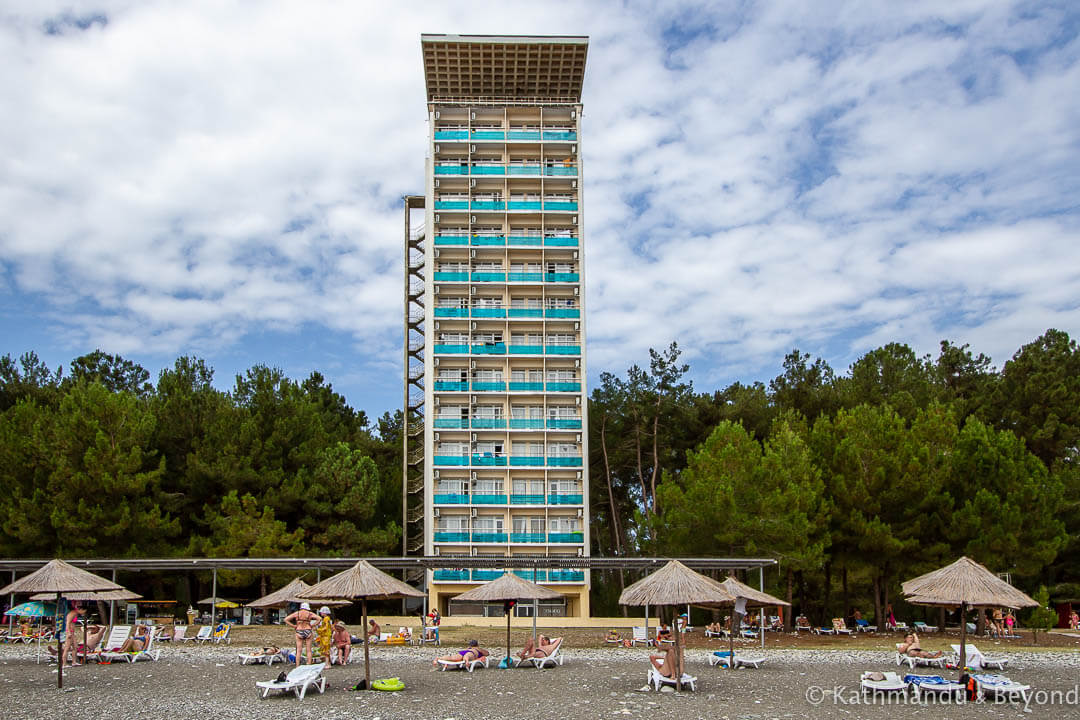
The origins of Pitsunda Resort – a Soviet utopia
When the sprawling resort at Pitsunda was created in the late 1960s, it heralded in a new era for Soviet holidaymakers. It’s no accident that the Resort of all-Union, as it correctly known, is situated where it is: both natural and human factors dictated its destiny.
Pitsunda sits on one of the largest bays in the Eastern Black Sea region and its azure waters are some of clearest along this stretch of coast. They also happen to be some of the calmest. Combine these factors with a pleasant sea breeze and an abundance of towering pine trees, which line the back of the stony beach and offer continual shade, even on the warmest of days, and you have the ideal spot on which to create the first Soviet mega-resort.
The human influence and the reason for the resort’s existence came straight from the top. Nikita Khrushchev, the then General Secretary of the Communist Party of the Soviet Union (1953-1964), in other words, the guy in charge, liked to holiday in Pitsunda. Indeed, he had his own dacha (holiday cottage) in the area and visited regularly. Originally the bay had been earmarked for a pioneer camp (a summer camp for youths) but Khrushchev decided, in true socialist-fashion, that limiting the area’s obvious benefits to just children was depriving the rest of the Soviet people and instead he proposed a large-scale resort that could accommodate hundreds of holidaymakers at any given time.
The year was 1959 and within a couple of days of coming up with the concept, Khrushchev started to make things happen. Almost immediately, he got on the phone to two of the Union’s most renowned architects, Mikhail Posokhin and Ashot Mndoyants. Neither architect was sitting around, twiddling their thumbs at the time. Mikhail Posokhin was about to become the Chief Architects of Moscow (1960-1980), and both men were heavily involved in the construction of the Kremlin Palace of Congresses (now officially the State Kremlin Palace) in Moscow, for which they were later awarded the prestigious Lenin Prize. But, the order was coming from the highest level and they were told to drop everything and travel to Pitsunda immediately.
They duly arrived in Pitsunda, surveyed the area and, after three days, created an initial blueprint for the resort. Work began soon after and the project took eight years to complete. The resort was officially opened in 1967 and the first guests to check-in had all participated in its construction.
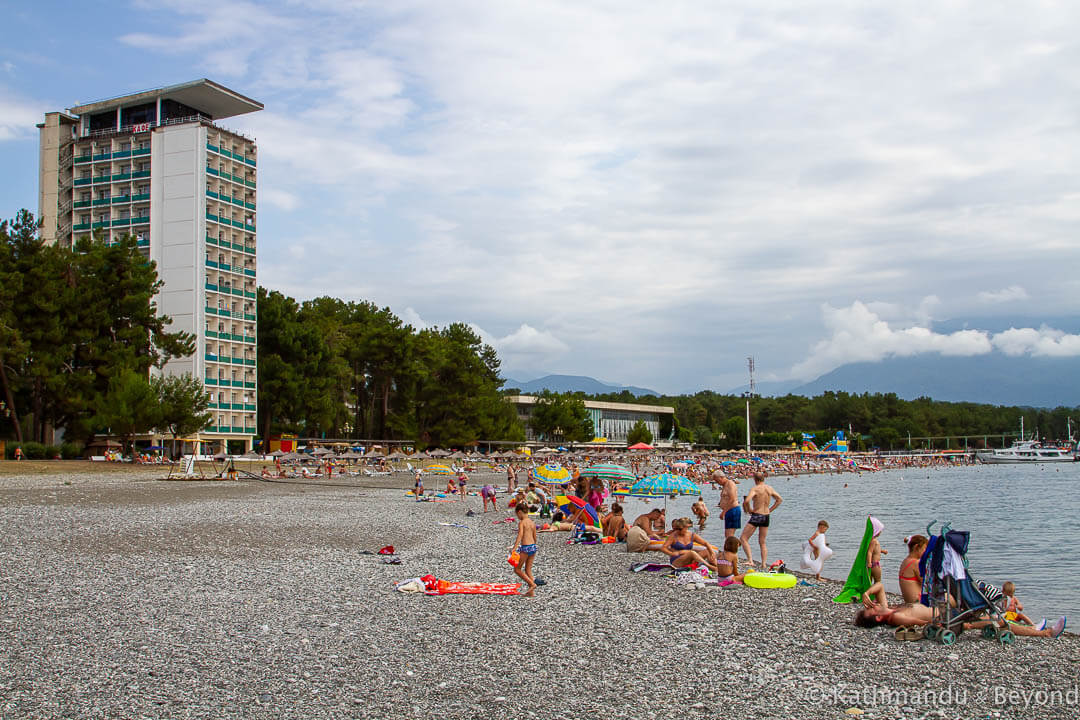
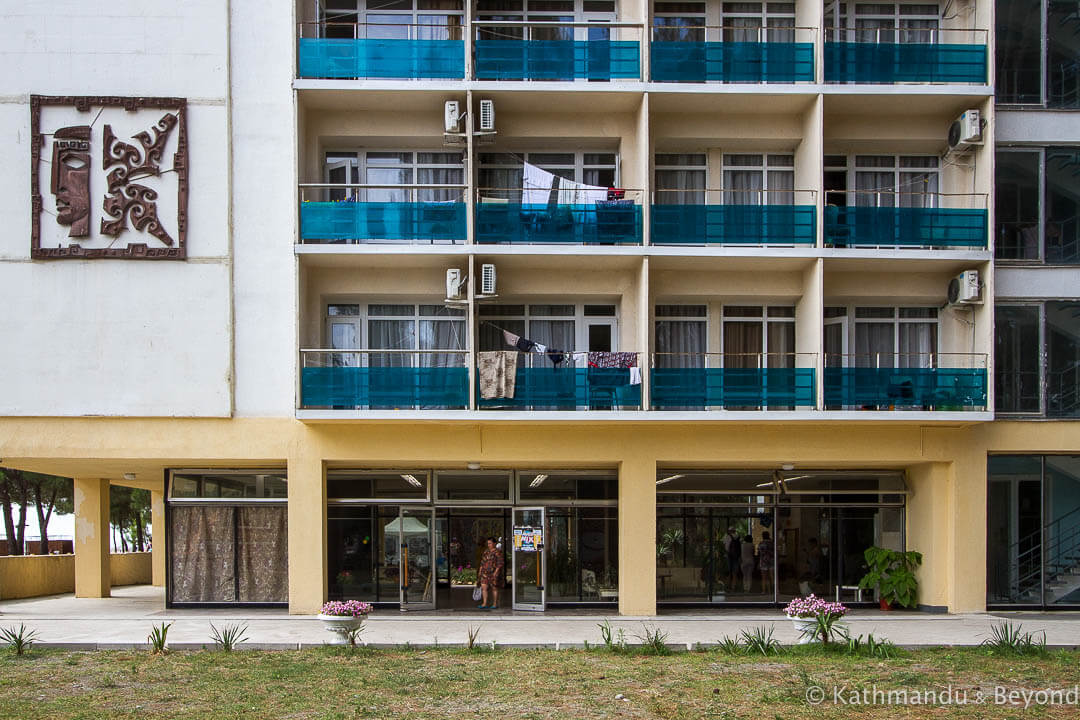
When work started, over three thousand labourers, artisans and craftsmen etc. descended on the small town of Pitsunda which, according to a 1959 census, had a population of just 911. Several four-storey Khrushchyovka needed to be built in order to accommodate them (*).
(*) Khrushchyovka, also known as Khruschoba, roughly translates as Khrushchev slum. It was the nickname given to the apartment buildings constructed all over the USSR in the early 1960s during the time Nikita Khrushchev was in charge. Originally established as a temporary measure to elevate the housing shortage of the period, there are still thousands of them in use today.
The original plan for the resort was eight high-rise hotels spanning the length of the beach but, for some reason, only seven were constructed (*).
(*) The hotels seem to be called boarding houses in everything I have read about them. This might have something to do with the literal translation as all the information I’ve gathered has been translated from Russian, but it’s more likely that boarding house is the correct word in this instance as it is a more socialist term than hotel.
Each hotel/boarding house was given a name: Mayak, Amzara, Amra, Kolkhida (Colchis), Golden Fleece, Bzyb and Apsny, and colloquially they were known as the Seven Candles Resort.
As well as creating areas where holidaymakers could relax under the shade of the gently swaying pine trees, the space between each of the tower blocks was filled with supporting infrastructure. This included dining areas, the largest of which sits to the right of the main entrance to the beach, playgrounds for kids, a theatre and also a circular entertainment venue that once played host to some of the Soviet Union’s top acts, but now sits in a state of abandonment.
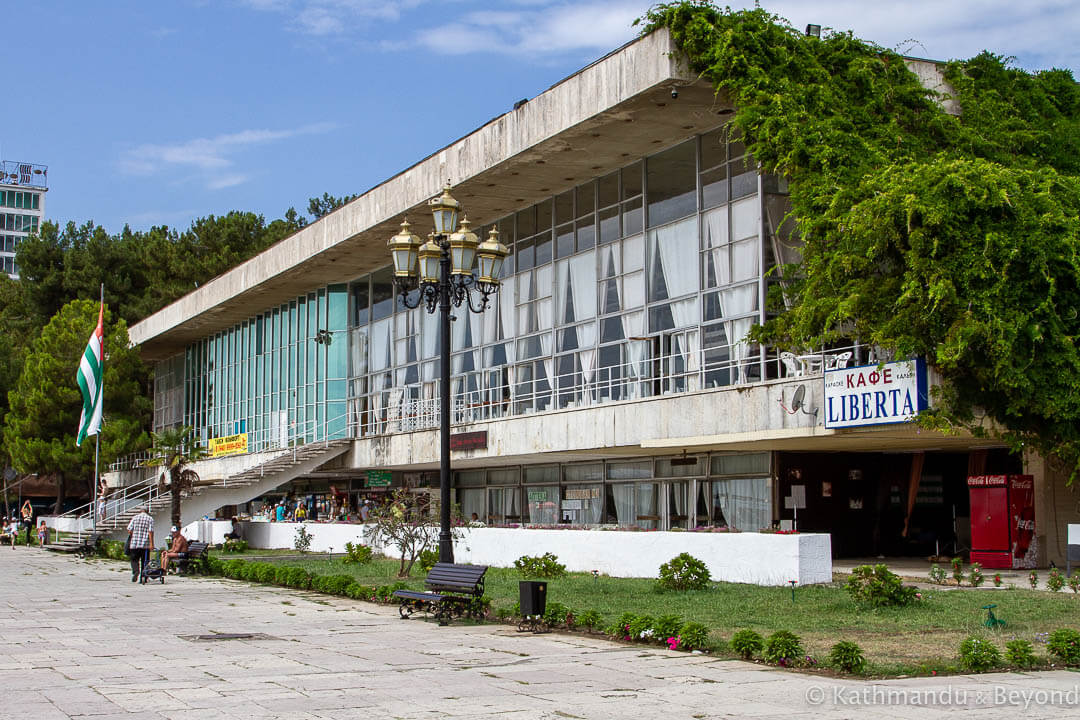
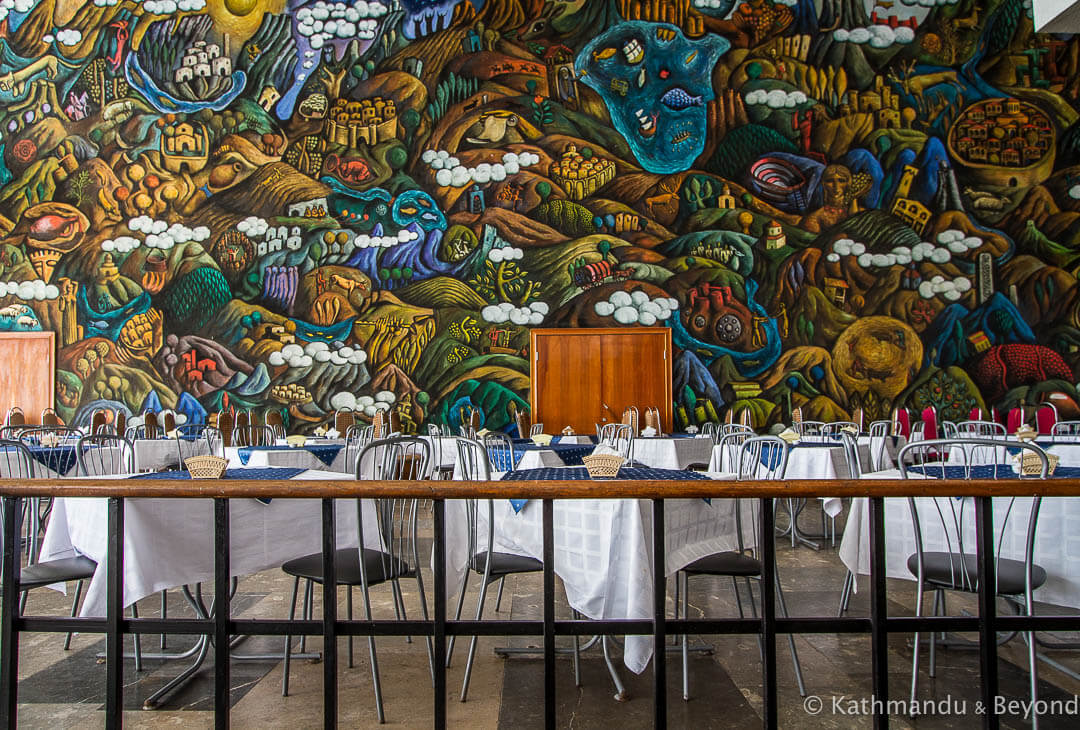
Interspersed through the length of the resort were several large mosaics and artistic panels. The artwork, which can also be found in Pitsunda’s town centre, on the side of the House of Culture, for instance, was created by a team of artists, sculptors and craftsmen under the leadership of Georgian-born Zurab Tsereteli (1934-present). Although he was already an established artist by the time he was awarded this commission, it was Zurab Tsereteli’s work in Pitsunda that really launched his career and elevated his status in the Soviet Union as well as further afield. He was awarded the title of Honoured Artist of Georgia for his work in Pitsunda and would go on to become the President of the Russian Academy of Arts, a position he has held since 1997.
The mosaics, motifs and bas-relief dotted around Pitsunda display an eclectic mix of Georgian folklore intertwined with both contemporary and abstract designs, with nature and mythical creatures featuring heavily in the latter.
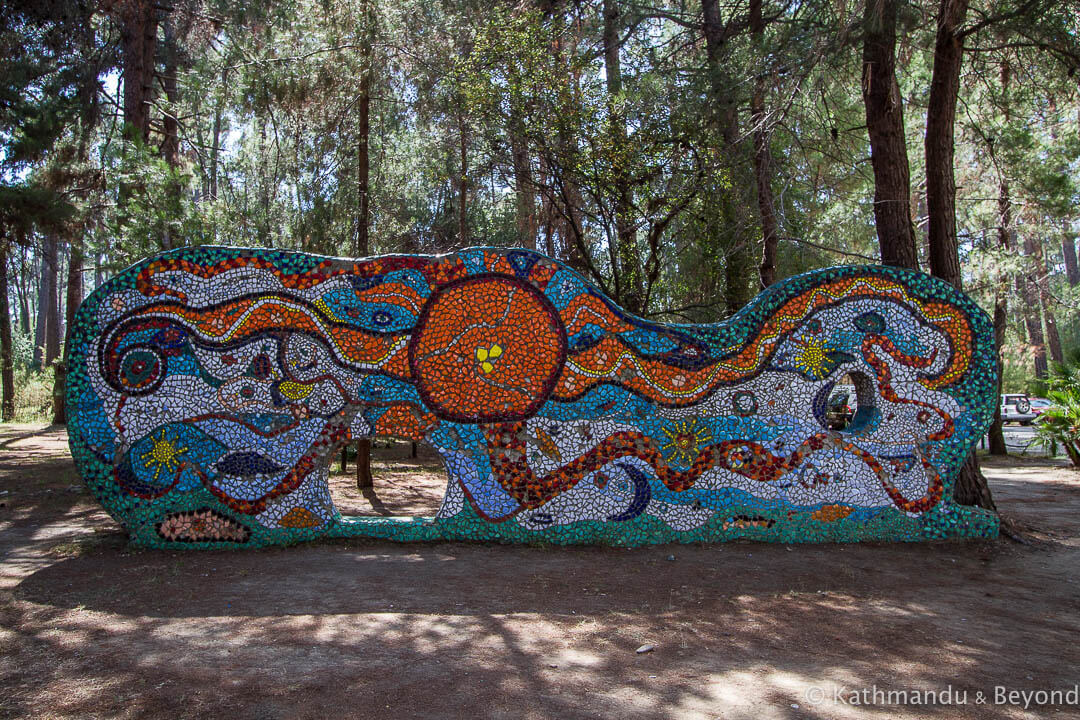
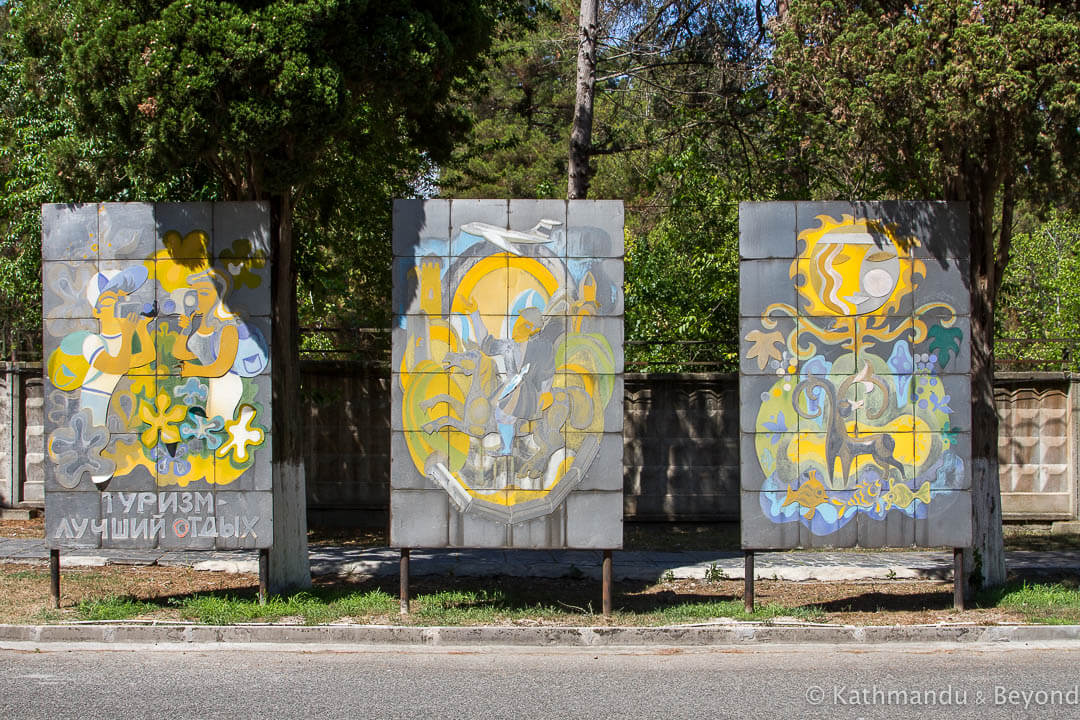
Two notable sculptures were also erected within the compound, one at either end of the resort. At the bottom of the walkway that leads down to the beach, the sculpture Diving for Pearls (also called Nyryalschiki), was created in 1969 and depicts the beginning of the swimming season. At the other end of the beach, the rather stern-looking monument is dedicated to Medeya (Medea in the English spelling), a Colchian princess who helped Jason (as in the Argonauts) steal the Golden Fleece. There are several versions of the legend, but it would appear that Medeya and Jason were an item. According to the story, he later rejected her and she exacted her revenge by murdering one of their children, and this is what is depicted in the sculpture.
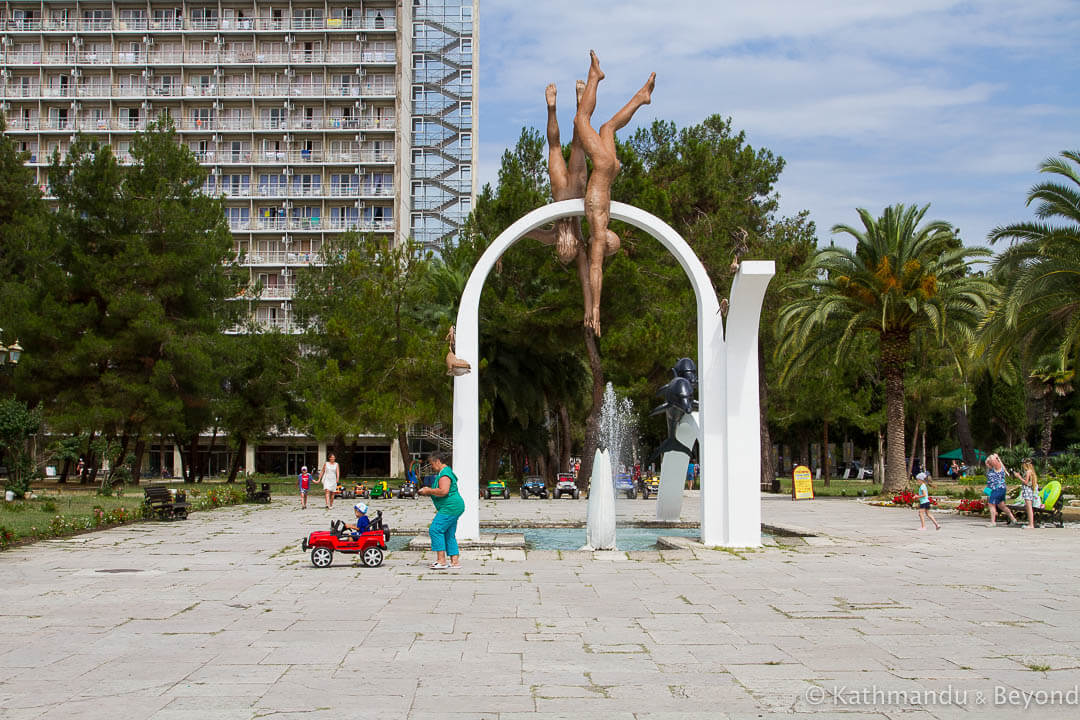
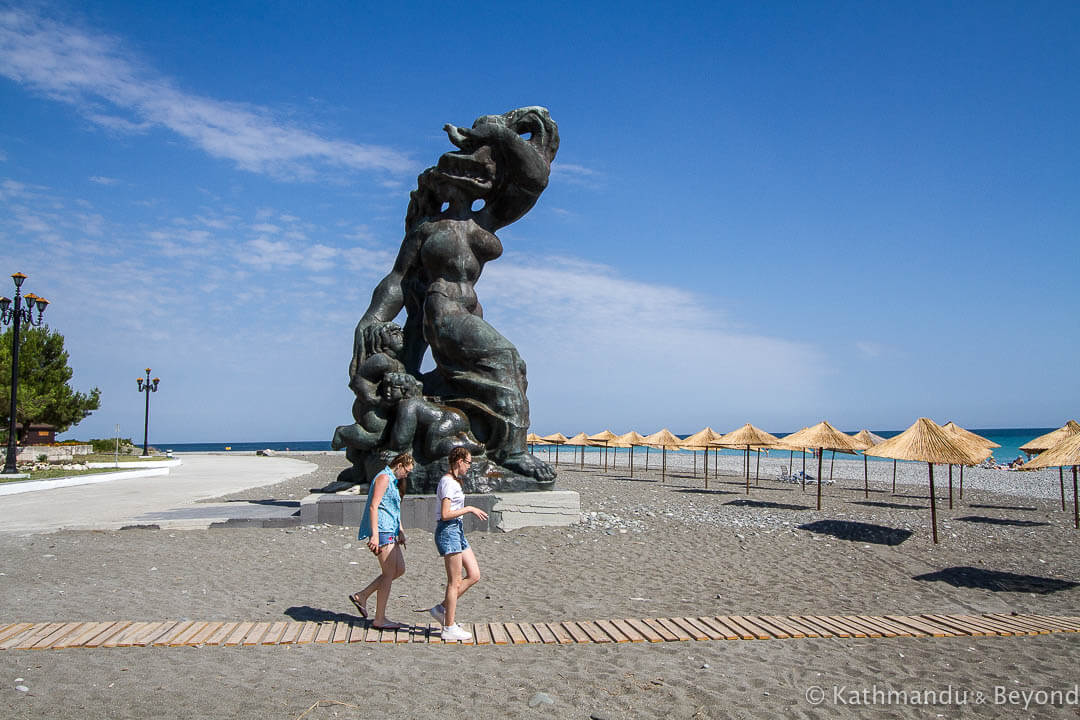
And in case you are wondering what this has to do with Pitsunda: Colchis was an ancient Georgian kingdom centred on this region of the Black Sea coast that would ultimately contribute significantly to the development of the nation of Georgia. The sculpture was created in 1969, in other words, before the Abkhazia-Georgia conflict of 1992-93. It also helps explain the reasoning behind some of the names of the hotels/boarding houses mentioned above.
As an aside and before I move on, it’s interesting to note that Nikita Khrushchev was actually holidaying in Pitsunda when he was deposed from power in October 1964. He died in 1971 and whether he actually visited his brainchild after its opening in 1967 is not something I’ve been able to find out but I suspect he didn’t as the KGB kept close tabs on him after his removal from office and he seems to have spent most of his time in or near Moscow in a state of deep depression and writing his memoirs.
Pitsunda Resort during and after the Abkhazia-Georgia conflict of 1992-93
Throughout the 1970s and ‘80s, Pitsunda thrived. These were the glory days of what has been dubbed the ‘Soviet Riviera’, and included other places along this part of the Black Sea coast, such as Novi Afron and Gagra. Visitors arrived in their thousands, mostly by train, from all over the USSR for their annual break and Pitsunda soon garnered a reputation as one of the best places to holiday in the whole of the Soviet Union. But that all changed when the savage Abkhazia-Georgia war broke out in August 1992. Beginning in the middle of the busiest holiday month of the year, the conflict raged hard around Pitsunda and I suspect there was widespread panic and a scramble to get away as soon as possible.
I can’t find any definitive information about whether the Resort of all-Union closed down completely during the war but I would imagine it did. I’ve also pondered whether those displaced by the conflict took up refuge inside the resort in the same way they did at the Eshera Sports Complex during and after the event.
There must have also been damage to the buildings. Some parts of the resort did look rundown when we were there but, apart from the abandoned entertainment centre I’ve already spoken about, we didn’t see anywhere near the same level of war-torn devastation that we noticed in other parts of the country. That’s perhaps because money has been invested in Pitsunda – renovation and repairs have certainly taken place since 2014 and there are more in the pipeline. Holidaymakers, nearly all of them Russian, have been returning to Pitsunda (and other Abkhazian resort towns for that matter) in their droves in recent years and it makes sense for the authorities and private investors to improve and maintain the infrastructure because, Russian aid aside, tourism is one of the only sources of income this de facto nation has got at the moment.
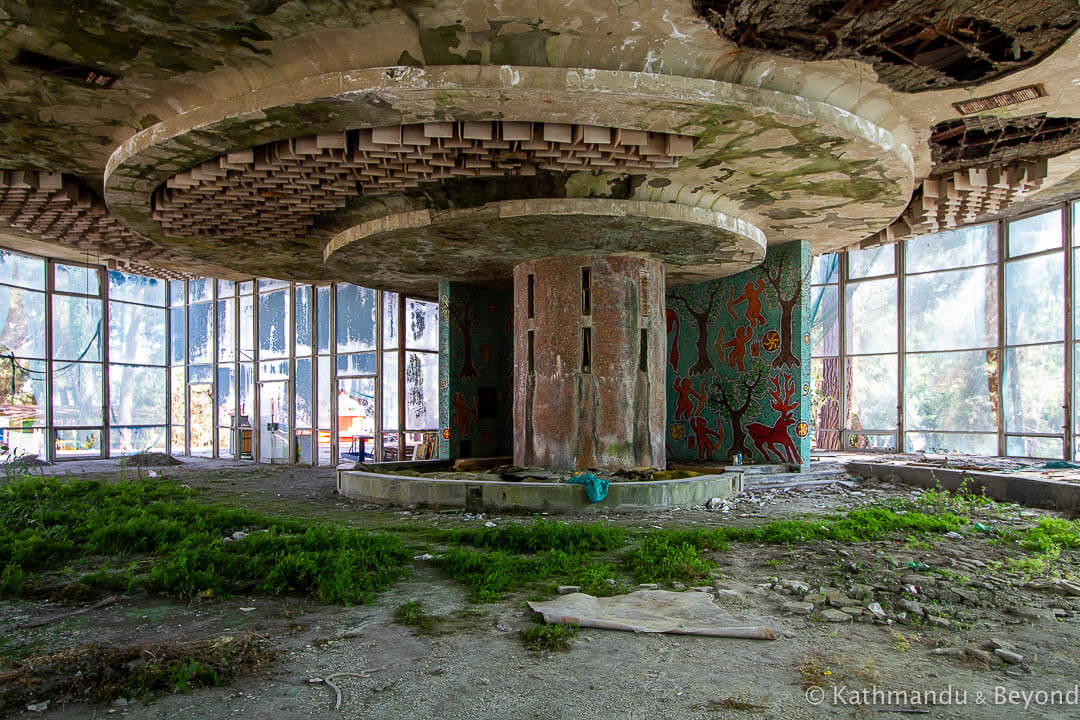
Our visit to Pitsunda Resort
The few days spent in the resort town of Pitsunda was one of the highlights of our time in Abkhazia.
We arrived in Pitsunda from Gagra, another beach resort further north and the place had instant appeal for us. The town centre, which is set back 700 metres from the coast, is far smaller and more pleasant than Gagra’s. When we arrived, I sat on a bench minding the bags and watching the goings-on while Kirsty went off to find us somewhere to stay (don’t raise an eyebrow at that, we take it in turns!). It was check-out/check-in day for the hotels and the House of Culture/Information Centre in the middle of town, which appeared to act as the transport hub for Russian holidaymakers, was a hive of activity with guests either arriving for their holiday or beginning their journey back home. I never get bored observing people and I sat in the shade thinking that Russians aren’t that dissimilar to the British when it comes to being on vacation. Of course I’m generalising, but kids with buckets and spades, overweight women that really should be covering up more than they actually do, and lobster-red guys with a bottle of beer in hand before midday are all the same traits I would see if I went to a beach resort popular with the Brits in say, Greece or Spain.
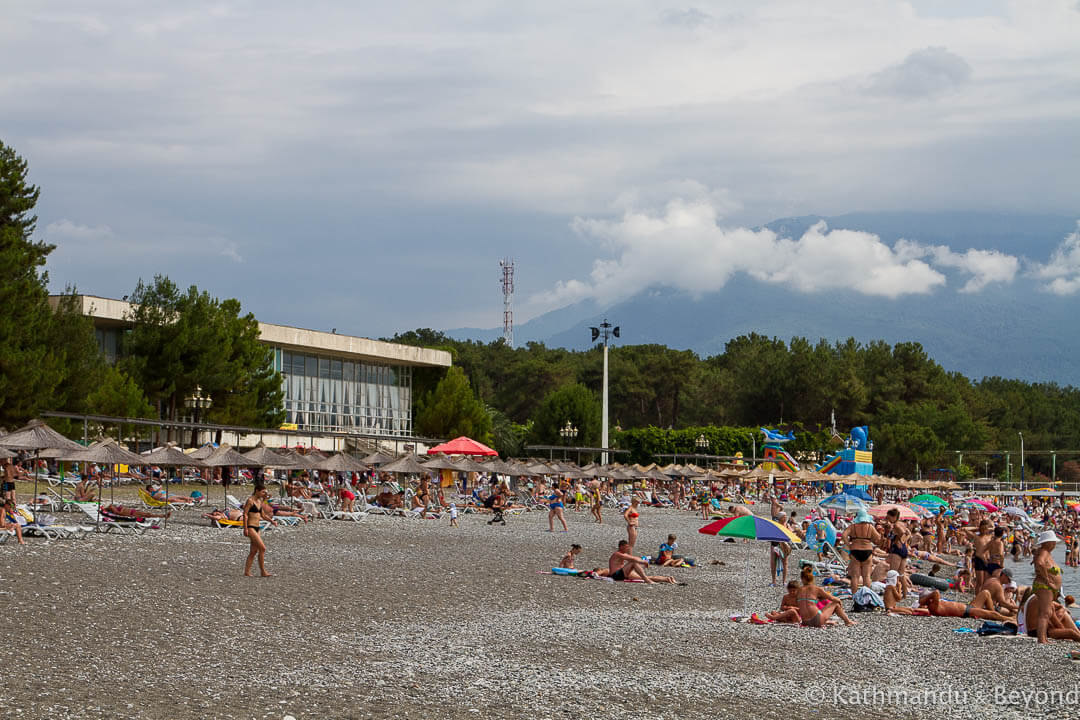
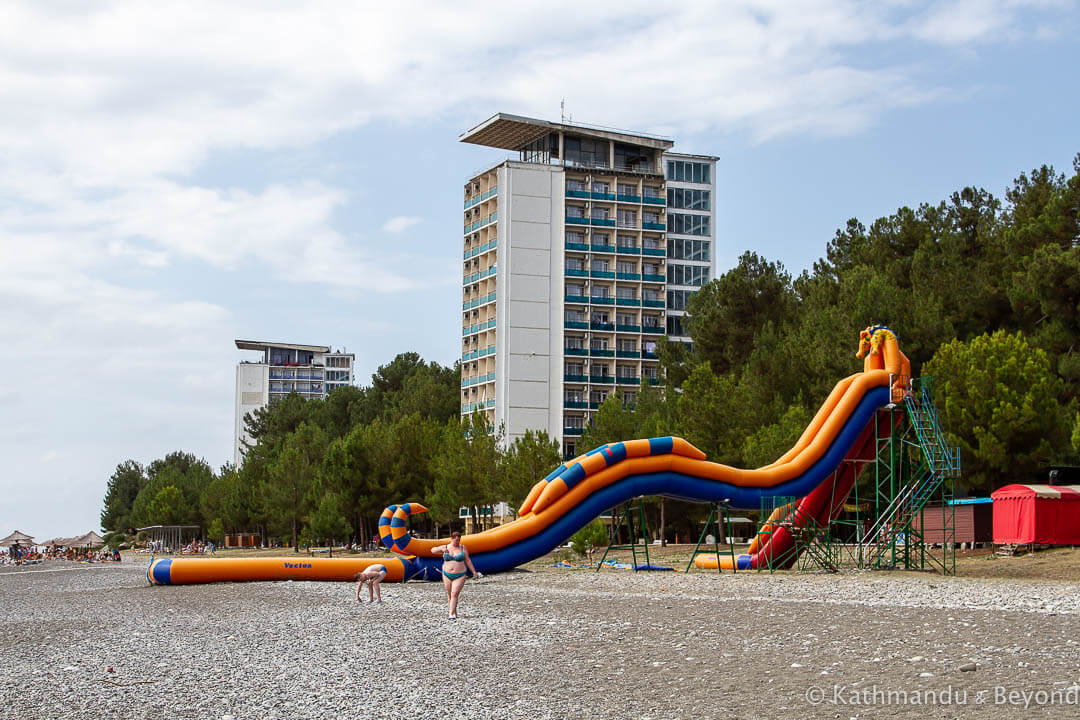
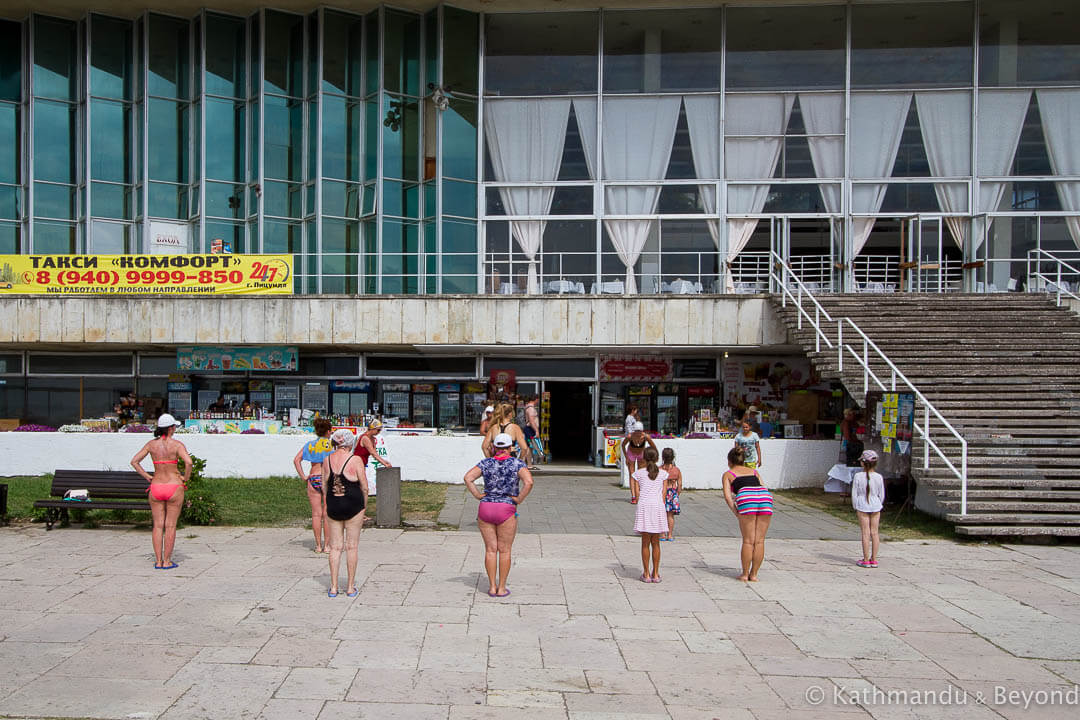
Heading down to the seashore a bit later on in the day confirmed my initial observations: boat trips, inflatables, people lying on loungers in the midday sun without any protection and nearly everyone concentrated in one small section of the beach, even though a short walk of one hundred metres or so would have provided much more space, are all things I’ve observed about the British on holiday.
A wide boulevard links the town centre with the beach and you have to pay a small fee of 30 rubles (35p/45 US cents) at the entrance kiosk. FYI, there is a reliable ATM machine tucked to the side of the ticket office. I mention this because getting money out of an ATM in Abkhazia can be a pain. There aren’t that many of them in the first place and half the ones you do come across don’t work with international cards.
It’s a nice walk down and, just before you reach the sea, a small promenade to the right (you can’t go left as there is a military base there) leads along the seafront, linking all of the hotels along the way. It’s perfect for a leisurely stroll, and on a hot day you really appreciate the shelter from the gently-rocking pine trees and also the agreeable sea breeze. We spent an age down there, doing more people-watching and seeing what we could find.
We located the ruined entertainment venue and sought out some of the mosaics. But, the big draw for us was the hotels themselves. The towers are set apart from one another and their perceived isolation adds to their allure. They are almost like guardians, watching over the beachgoers from above and I, for one, was seduced by their architectural design. We were particularly taken with Boarding House Mayak, with its unusual and now defunct observation deck on the rooftop. We tried to get a closer look by going all the way to the top floor but our hope of being able to look back across all seven of the hotels from this vantage point was thwarted by a large, padlocked metal door, so we had to give up on that idea.
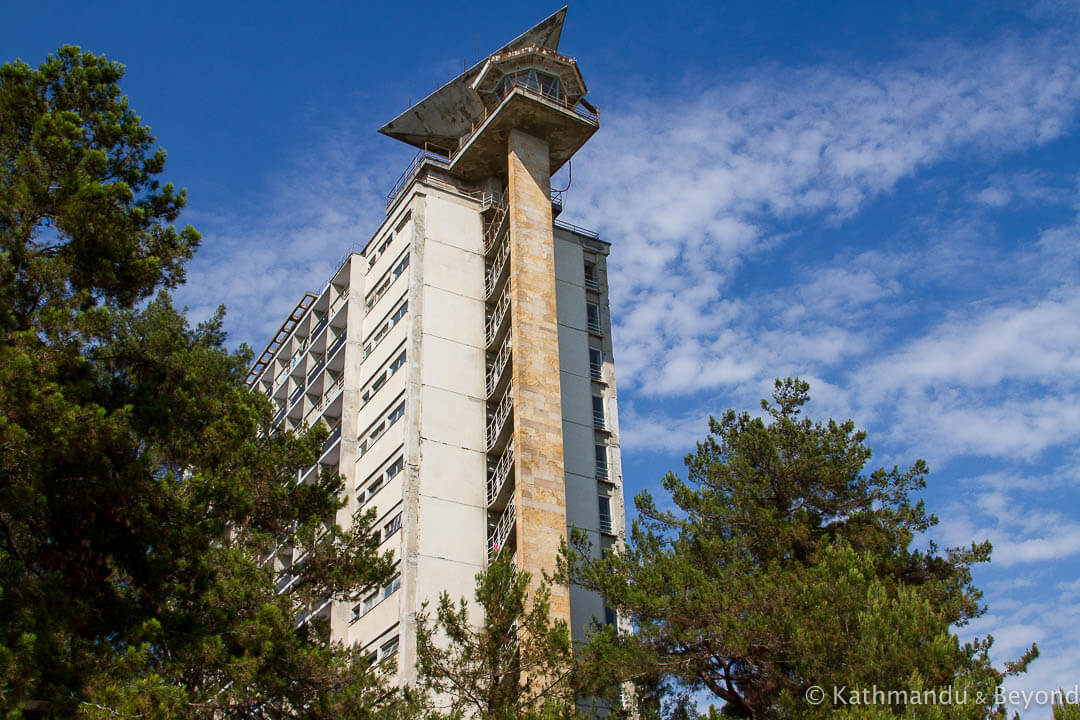
We kept walking when we reached Mayak, which is situated on the tip of the peninsula, and eventually we found another entry and exit point that connected the resort with the town. It’s a good option if you fancy a longer, round-trip walk rather than heading back the same way.
We were reluctant to leave Pitsunda but we were running out of time on our visa so had to get going. It helped that our guesthouse (we didn’t stay in one the resort hotels which, more than likely, would have been full anyway) was run by two elderly and kind babushkas and everyone else we came into contact with was also happy to see us. If only we had known what was going to happen next…
How to get to Pitsunda Resort on public transport
Pitsunda is 10km off the main highway that links Sukhumi with Gagra. There are reasonably frequent marshrutkas (fixed route minivans) between Gagra and Pitsunda. In Gagra, the marshrutka stand is nearby the Sana Sanatorium (GPS 43.276328, 40.272893) and in Pitsunda they arrive and depart from opposite Bichvinta Cathedral (GPS 43.15989, 40.33906).
From what we could gather, there are not many marshrutkas linking Pitsunda with Sukhumi. If there is no direct transport, do what we did and take a Gagra-bound marshrutka from either location to the junction for Pitsunda (GPS 43.2308, 40.31848) and connect with another marshrutka from there. Gagra transportation leaves from outside the railway station in Sukhumi (GPS: 43.0072, 40.99586).
As is the norm in this part of the world, you will need to pay the full A to B marshrutka fare, regardless of where you get on or off.
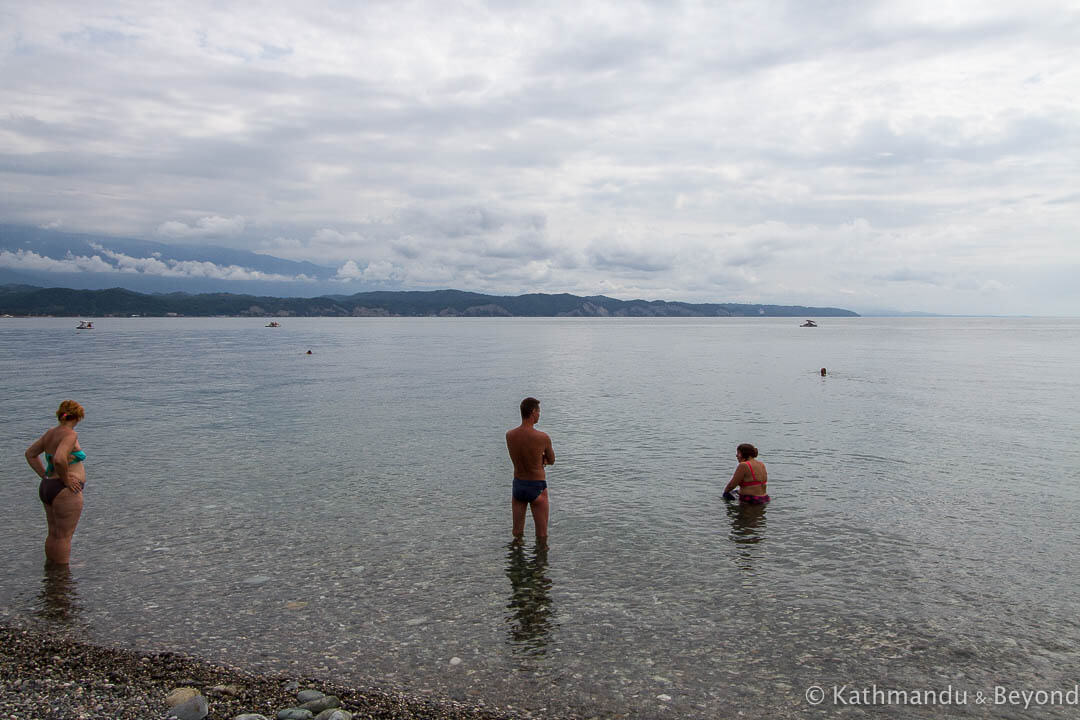
READ MORE POSTS FEATURING ABKHAZIA AND THE REST OF THE CAUCASUS
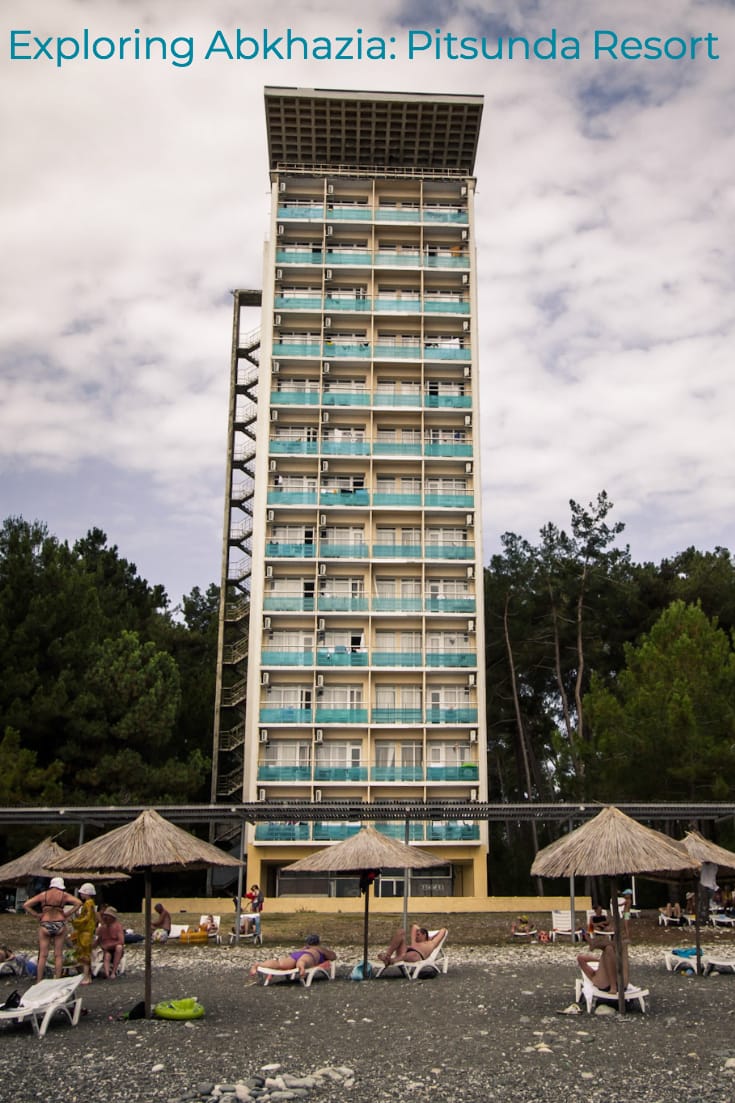
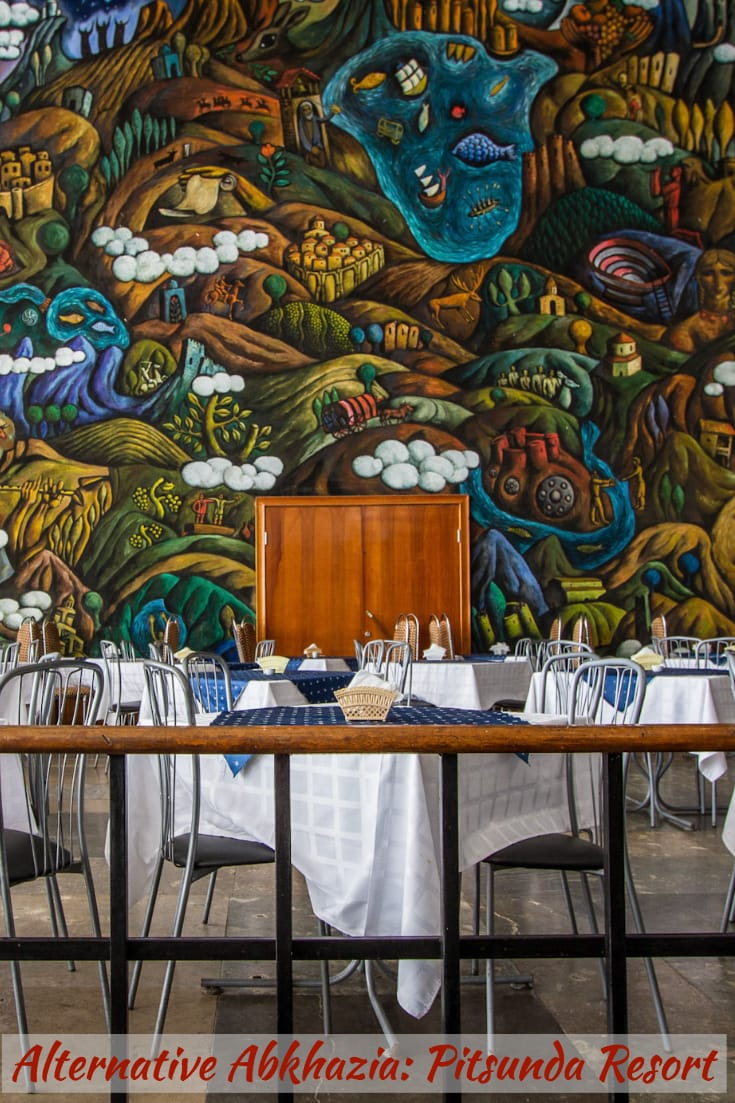
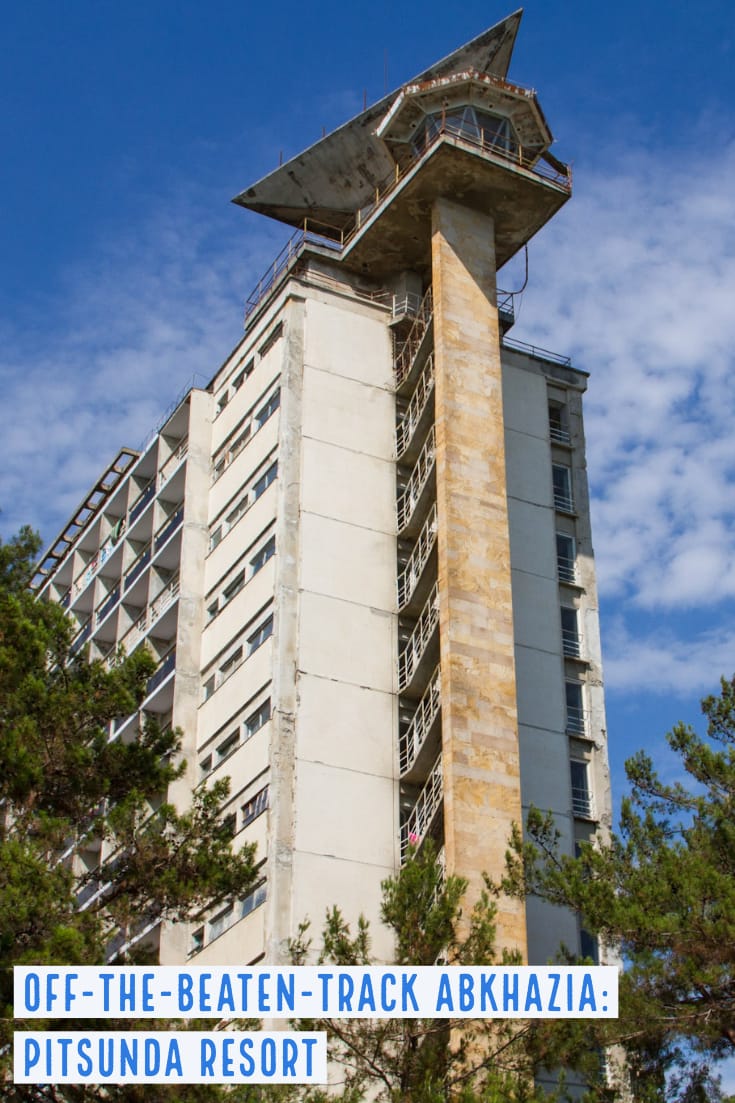

What a treat to find this. I stayed here in 1980 with my Dad and stepmom along with a large party of British Steel families after their long strike around 1978/79.
My Dad worked at British Steel in Brierley Hill and the union had received an offer from the Russia steel union of a 3 week holiday in Russia. This was a weekend in Moscow then 2 weeks in Georgia and a further weekend in Moscow. Around 70 families went and we were fully escorted the whole time.
The food in Georgia wasn’t terrible but it just wasn’t anything that we wanted to eat so it felt a little like a starvation diet. When we first got there it was usual to see stray dogs wondering the restaurant and birds flying around inside.
The beach was good but we would have these huge jelly fish floating around and abandoned on the beach. I distinctly remember an old lady coming along and grabbing one, presumably to put in a pot at home.
Half of the total group stayed in a separate resort in Sochi and they had a great time. We went there for half a day and we went through their superior food like locusts!
Hello Ian, this is fantastic and thank you for taking the time to post your comment. It is always fascinating to see archive photos of places we have visited. Apart from being in black and white, your photo of the Diving for Pearls monument (photo 1) looks pretty similar to our one above and the driveway leading to the resort in your 3rd photo is also instantly recognisable. It’s funny what you say about the Georgian food compare to what you had in Sochi – given the reputation Russian food had in the West during Soviet times, I would have imagined it would have been the other way around! The jellyfish must be seasonal (we visited in the month of August) as we didn’t see any while there but the stray dogs are definitely still an issue!
If you don’t mind, could I ask you a favour? If you happen to have any photos of the resorts or the beach that you are willing to share and permit me to use, I would be very grateful as archive photos would really enhance the post? No worries if not but thank you again for posting such an interesting comment.
This our picture in 1980. Maurice, Iris & Ian Danby
The whole British Steel group arriving in Russia 1980
Me just on the road alongside the resort 1980.
I loved coming across this post. I stayed in Pitsunda in 1985 (or thereabouts) as part of a multi-national “youth and reconciliation” group that traveled from Paris to Moscow and then to Pitsunda. The trip was sponsored by the French trades union CGT. I came from Belfast, representing our local Unemployment Centre, where I volunteered. I just read a BBC article about the food in Batumi, which is a few hours along the coast. I remember eating food with dill and cheese a lot. I would love to return one day. Also, unfortunately, I cannot see Ian Danby’s photos.
Hello Julia, thank you for posting about your memories of visiting Pitsunda. It is interesting to read them and get a glimpse into how the place was during Soviet times. Batumi is also an interesting place to visit, and yes, dill and cheese still feature heavily in the region’s cuisine!